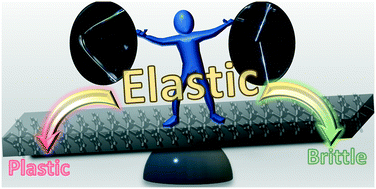Exploring the diversity of elastic responses of crystalline cadmium(ii) coordination polymers: from elastic towards plastic and brittle responses†
Abstract
The ability of one-dimensional crystalline coordination polymers of cadmium(II), namely [CdCl2(3-Clpy)2]n (1), [CdCl2(3-Brpy)2]n (2), and [CdBr2(3-Brpy)2]n (3) (3-Clpy = 3-chloropyridine; 3-Brpy = 3-bromopyridine), to adapt to mechanical stimuli was examined and differences in elastic responses were observed. Crystals of 1 and 3 showed similar behaviour with substantial elastic responses to external mechanical force followed by slight plasticity close to the breakage point, where these responses were classified as elastic→plastic. On the other hand, crystals of 2 were found to be less adaptable to mechanical stimuli, displaying only a slight elastic response with a typical brittle breakage. Crystals were further examined by atomic force microscopy while structural features were explored by theoretical methods. The rationalization of the observed mechanical properties in the context of interaction energies and Young's moduli revealed that the stronger interactions are reflected in the larger Young's modulus values, which in turn made the crystals stiffer and consequently less adaptable to external mechanical stimuli.

- This article is part of the themed collection: Supramolecular & Polymorphism


 Please wait while we load your content...
Please wait while we load your content...